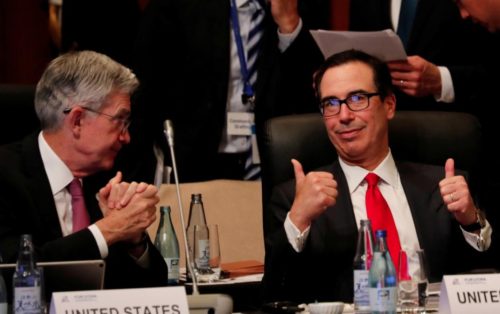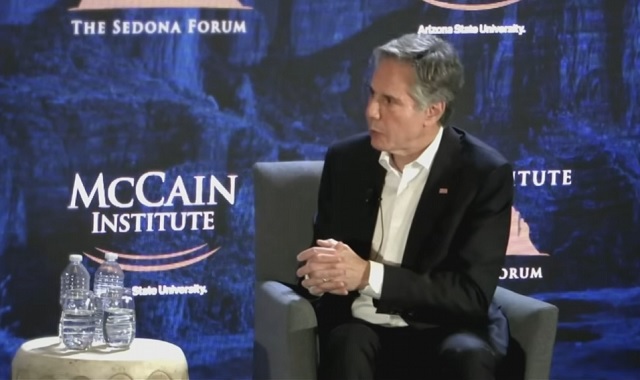Zero Hedge Confirms Fed is Dead
from ZeroHedge:

It is always good to have a statement from the coroner when pronouncing death as I did on May 19, 2020. That is when I gave time of death and pronounced “The Fed is Dead.” You especially want the second opinion when you’re talking about Feddie Krueger, who has more extra lives than a cat … a really bad cat.
Zero Hedge’s adopted motto from The Fight Club is “On a long enough time line the survival rate of everyone drops to zero.” Apparently, ZH thought Feddie’s time line had been long enough. Today Zero Hedge stepped in as coroner.
It’s proclamation is a long article, so I’ll distill the applicable parts of it below, but if you want to read the whole piece, with formulas for interest rates, etc., you can find it at “The Biggest Credit Impulse In History Leads To Some Very Awkward Questions.”
Back in June of last year, I only had the courage to ask “Is the Fed Dead?” It seemed likely to me that Feddie was nearly dead. So, I kicked him a few times and raised the question. This year, when the Fed’s heartbeat (the stock market) didn’t start ticking, even after injected with massive QEpinephrine, it seemed clear the Fed had finally met the end I said it would.
Now with ZH‘s affirmation, we can say the wicked Fed is not only “merely dead but really most sincerely dead.”
Ding, dong the Fed is dead
First, the coroner took the Fed’s pulse:
Regular readers know that it has long been our contention that – under the current regime of debt-fueled growth – one of the clearest indicators of future economic growth is the present credit impulse.
Zero Hedge
And then the coroner noted the amount of epinephrine the Fed had self-administered (something only a freak like Feddie Krueger can do):
In just the past 3 months we have seen a gargantuan $18+ trillion in fiscal and monetary stimulus, equivalent to just over 20% of global GDP? ZIt should hardly come as a surprise that as a result of this unprecedented firehose of credit-enabling liquidity, the recent spike in the credit impulse has been the greatest in history.
And then noted the lack of response:
Yet for the first time, GDP is not keeping pace.
I’ve noted for some time that the stock market had built up a tolerance to FedMed to where no amount would save either the economy (as measured by GDP) or the stock market in the next (now present) recession, also known here as The Epocalypse.
This point of failure, I’ve said for years would certainly arrive because of the Law of Diminishing Returns wherein the problems you start building up by administering one particular remedy start to outweigh the benefits and bring down the very thing you are trying to save. If what you are doing to cure the patient does nothing to eliminate his underlying cause of ailment, you can only pump more and more medicine, trying to effect the cure, until toxicity from the medicine, itself, takes the patient down.
So, when one of the many kinds of cancer taking this patient down was too much bad debt, you cannot cure the patient by getting him to take out a lot more debt in order to keep advancing to a higher cycle of debt-based economic growth. And that was only one thing the Fed was making worse, not better, by its cure. In essence, its approach to saving us from imploding bubbles was always to blow the bubble bigger.
Others have noted this phenomenon in the Fed’s inability of late to get a response from FedMed:
As Deutsche Bank’s Francis Yared writes in the latest Fixed Income Weekly report, “credit growth and lending surveys have historically been good indicators of underlying GDP growth.” However, “the sharp divergence between credit and activity observed in the US, the eurozone and China is particularly unusual and highlights how different this crisis is relative to the GFC.”
To be more prices in how I pronounced this death, I should have said all along that FedMed is dead. The Federal Reserve, of course, still exists and still carries out monetary operations. What is dead is the effectiveness of any of its remedies to bring recovery to the collapsing economy or a crashing stock market.
The surge we got in stocks this last time came well after the Fed started raising its injections of stimulus. It’s too early really to know if the economy will respond because the economic delay is usually six months or more, but the stock market usually responds immediately.
This time the market did not respond until it was able to come to a belief that full recovery would be as quick as economic collapse had been.
ZH concludes there are two alternative ways of understanding the stock market’s delayed response and GDP’s total non-response:
i) either the credit impulse will have a massive impact on global growth, although somewhat delayed until the credit ends up in the broader economy unless of course it remains stuck in the stock market which has already wiped out most of its covid-losses [what I just said above about a delay for economic response], or ii) we are well and truly in a “newer abnormal”, one where even drowning the world in cheap debt fails to boost GDP.
It would be too early to conclude the latter due to the normal lag, except ZH gives a strong indicator that nothing is happening even beneath the surface that can eventually stir life on the surface.
The economic establishment has bet its credibility on the first alternative [the normal delayed response].
And, thus, the stock market is going up because it believes the recovery will come and come quickly.
ZH argues for the latter alternative:
Recall that just one month ago we pointed out that the … marginal utility of debt has collapsed to all time lows, as it takes ever more debt to result in economic growth, which is just another way of saying that the positive economic impact from any outsized credit impulse is virtually nil.
That would be the Law of Diminishing Returns, which I’ve long said will bring the death of FedMed (which I have more broadly called the death of the Fed (as in so far as both the stock market and the general economy are concerned).
And tied to that, is another reason why any day now the current system may be the last: the marginal utility of every new QE is now declining to the point where soon virtually none of the money created by the Fed out of thin air will enter the economy and instead will be stuck in capital markets, resulting in hyperinflation for asset prices even as the broader economy collapses.
I’ve described that as possible bizarre Wonderland where the stock market would continue to rise for months even as the economy continued to fall sharply, which would ultimately create a situation where bankrupt companies trade like trillion-dollar chips in the Wall Street Casino.
Because of the V-shaped recovery fantasy, the market didn’t take long to do exactly that. I was able to report just in the last couple of weeks that the train wreck was already arriving at that station:



